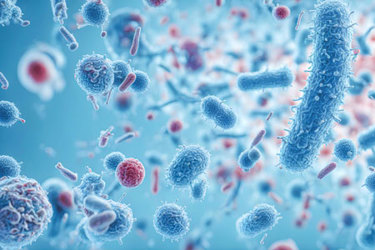Fighting The Foam: Scientists Discover "Dark Matter" Solution

Wastewater treatment plants (WWTPs) often struggle with foaming in treatment tanks. Foaming, particularly from stable foams, can disrupt biological processes and often need costly chemicals to control. While there can be many causes of foaming, much of it is attributed to certain bacteria, the most common of which is Gordonia amarae. Recently, research published in Nature Communications shed light on a natural predator of Gordonia amarae, and, critically, reveals the host’s surprising mechanism of resistance. The study offers novel insights into microbial interactions within wastewater environments and presents a potential pathway for more sustainable foam management strategies.
Gordonia amarae and similar bacteria have sticky, hydrophobic outer layers of mycolic acid. It is these layers that are primarily responsible for stable foams. Candidatus Mycosynbacter amalyticus is one of many “dark matter” bacteria, a term used for microbes whose roles and interactions in wastewater environments are not yet understood. It is an “obligate necrotrophic parasite,” which means it specifically derives nutrients by killing its host. Mycosynbacter amalyticus attacks by attaching to the mycolic acid layer of Gordonia amarae and similar species to infect and consume the host. This parasitic action actually reduces the population of foam-causing Gordonia amarae, thereby mitigating the foaming issue.
Get unlimited access to:
Enter your credentials below to log in. Not yet a member of Water Online? Subscribe today.
